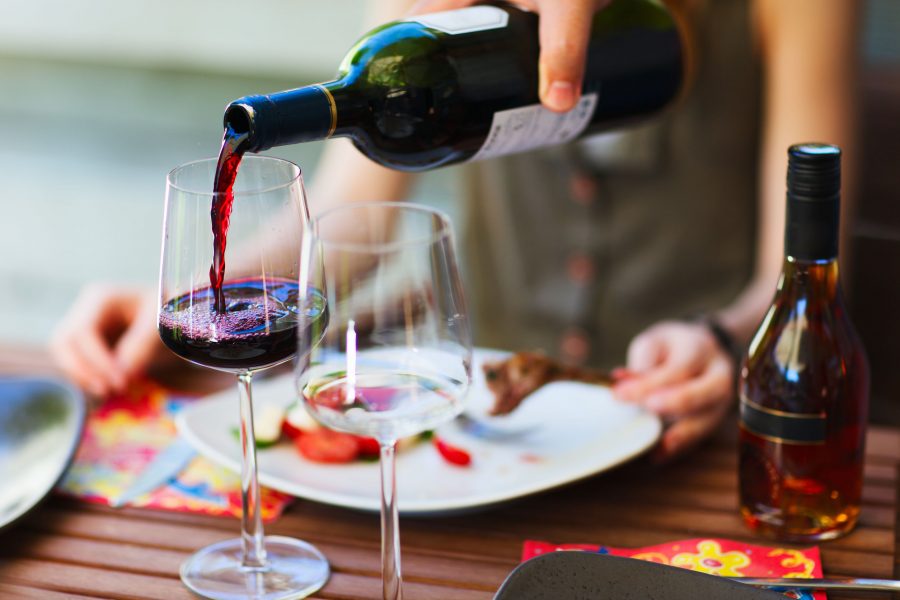Hicken explains BC wine distribution, part two: bars and restaurants
The Province of British Columbia is in the process of reviewing and reforming its so-called “antiquated” laws surrounding the sale and distribution of liquor. We decided it would be timely to share archived posts by BC wine law expert Mark Hicken on how liquor is currently sold in British Columbia. The first post discussed retail sales. Here is the 2nd of two posts.
Licensing of Restaurants and Bars
All restaurants and bars that serve liquor must be licensed to do so by the BC LCLB. Licenses are divided into two categories: food-primary (for restaurants) and liquor-primary (for bars and nightclubs).
Restaurants need not serve food with liquor but a full range of food must be available whenever liquor is available. Restaurants with more than 50 seats may also apply to have a small separate lounge area which serves liquor without food.
The terms and conditons for food primary licenses are here. The terms and conditions for liquor primary licenses are here. Licenses can be transferred if a business is sold but the new owner will have to go through atransfer and approval process.
Purchase of Wine and Liquor
Licensed restaurants and bars are “assigned” a BC Liquor Store from which they are required to purchase their liquor. The BC LDB considers liquor acquired from other sources to be “illicit” (check your prohibition dictionary for that one). However, licensees can order BC wine direct from a winery (although at the same price as they would pay the LDB).
Pricing of Wine and Liquor
Restaurants and bars are required to pay the full retail price for wine and liquor that they purchase through their designated store. The only discount that is given is for the GST (5%) and PST (10%). The restaurant is then required to charge those amounts to the customer once they sell the product and remit them to the appropriate revenue authorities.
Most restaurants (with a few notable exceptions) in BC will typically double the liquor store price for wine in order to generate a retail restaurant price. So for example, if a wine retails in the BC Liquor Store for $10, the restaurant will typically charge $20. This means that restaurants will normally be marking up the wine more than double because they did not pay the GST and PST on the $10 price. For example, when a restaurant buys a $10 wine, the tax of 15% will be deducted out of the price so the restaurant would pay $8.70 ($8.70 x 1.15 = $10.00). The markup to $20 is actually 2.3 times the cost to the restaurant. The restaurant will then charge tax on the wine to the customer, meaning that the customer would pay $23 for the bottle.
As noted above, restaurants and bars do NOT receive any wholesale discount on wine or liquor prices. Because retail prices in BC are extremely high (see Part 1 – Retail Distribution) and because there is no wholesale discount, restaurant and bar prices for wine tend to be extremely high. Customers from other parts of the world are often astounded at the prices for wine in BC restaurants. For example, a wine like Chateau St. Jean Chardonnay from Sonoma would typically sell for about $10-12 in the U.S. retail market. In B.C., the retail price for that wine is $24.78. In a restaurant, that wine would probably be priced at $50. Once you add in the tax, it would be $57.50. Customers from the U.S. perceive this to be ridiculous – the wine costs more than 5 times what they could buy it for at home at retail.
Corkage
In July 2012, the BC Government announced that corkage (bring your own wine) would be permitted in BC restaurants. Previously, this was illegal. This program is voluntary so restaurants may or may not allow it. In addition, restaurants may charge a fee for corkage which is entirely at the discretion of the restaurant.
Taking Bottles Home
If a customer does not finish all of a bottle that was purchased in a restaurant, they are permitted to take the wine home wtih them at the end of the meal so long as the restaurant reseals the wine. This is a relatively recent change.

